Types of Carp: A Definitive Guide
- By Andy Grenfell
- |
- 23 November 2023
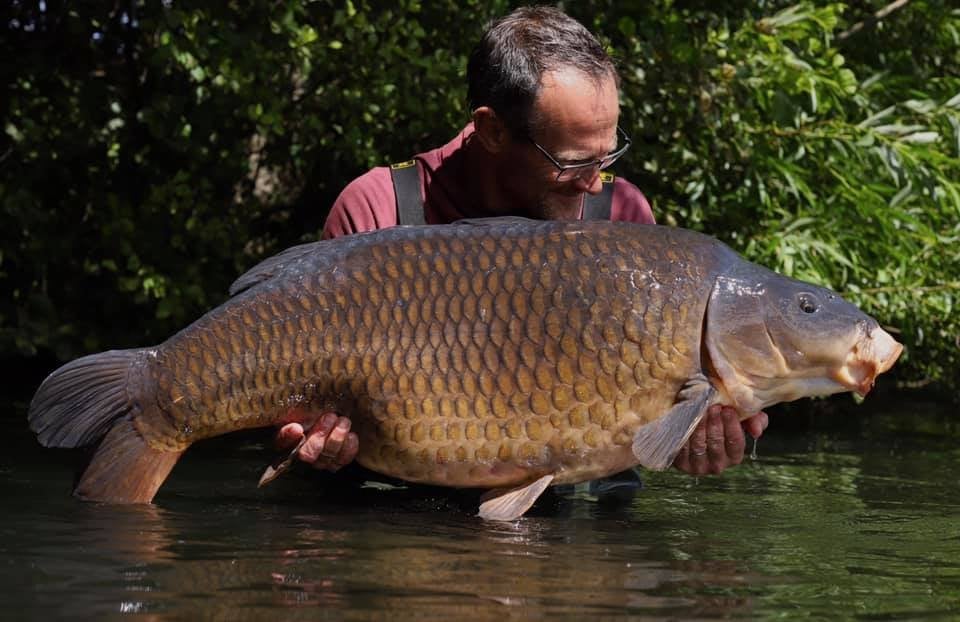
Open up any social media platform and put in fishing and I am sure your wall will be adorned with pictures of carp. There are books and literature, to huge volumes of content online and tv from how-to guides to tales of pursuit and adventure.
So be it a picture of a huge chestnut flanked mirror, or mahogany bronze common that catches your attention, a certain tale adventure that captivates you, or maybe, you simply go fishing and hook some unknown lethithan and experience the raw power a carp has to offer it's so easy to fall in love with carp.

It seems once you experience carp fishing in some form its impossible to go back. Before you realise every time you think about wetting a fishing line, you will be thinking about catching carp. It will see you looking at new carp fishing rods and larger reels to obtain those extra yards and handle the power of the monsters you are after, to bite alarms to signal to you that your carefully placed trap as been sprung, while bedchairs and bivvies to help keep you comfortable, and open up more hours on the bank both home and abroad.
And it doesn't stop there! For some, (myself included), it becomes an obsession, not intent on just catching any carp that swims along, but seeking out the pinnacle of carp from their chosen waters! Wanting to chase bigger, more spectacular, or even catch that one that you saw that picture of and so desperately want in your album, many a carp angler has devoted huge amounts of time, and resources to make it happen.
So what is it about carp that inspires and captivates us like no other species does? Below, I will cover the main different king carp and other carp species and hopefully give you an insight into why they are so sought after.
Common Carp
When Richard Walker caught Clarrisa in 1952, a huge common carp of epic proportions for the time, at 44lb it sent shock waves through not just the angling world, but the news in the Uk, with the capture making new papers around the country! This sowed the earliest seeds of the carp scene as we know it today.
It spawned the romance of big carp, and made aura of these uncatcable dragons a reality, and they still hold a mythical status today, in that almost every lake holds a mythical big common that goes uncaught.
Whilst a huge common might not make national headlines these days, a huge commons can still cause shockwaves in the carp scene, esp when elusive monsters such as the incredible Burgfield common are landed, or Gigantica's Immaculate common in France after long spells uncaught. 
Commons, take their name from the fact they offer a uniform scaling, along their body, and do tend to be more prevalent. Whilst still being from the same King Carp family as their mirror carp relatives, they do have a slightly slower growth rate depending on the strain, and some believe subtle differences in behaviour.
Some anglers feel commons are still more closely linked to their wild carp cousins, and as such their feeding habits and tendencies mean they can be far more elusive in their capture. Yellow hook baits and a stronger tendency towards natural baits are often said to be the preferred method to snare a big common, (of that I am not so sure), and whilst they do tend to have a slower growth rate than mirrors, they more than make up for it in fighting power often seeming to be more muscle packed.
There is something truly awe-inspiring about a huge common with its huge chestnut flanks, and long may that remain.
Mirror Carp
The next most abundant of the carp found in UK and European waters is the mirror carp. Bred by the monks to reduce the number of scales to make preparations for the dinner table back when they were a farmed food staple for so many, they come in a huge array of scaling patterns made up of an array of mirror like scales, which is from where they get their name.
From sparely scaled, almost naked flanks, to being almost breathtaking in their array with perfect uniform zip linear rows, or huge big apple slice-like scales adorning their flanks to being covered in scales giving us what we call fully scaled. Their diversity in patterning makes them truly unique, and far more easily identifiable when they reach large sizes.
It was in the 1985 Chris Yates broke Richard Walkers long standing carp record, and a mirror of over 51lbs from Redmire, a fish known as the Bishop, and with it in the subsequent years, carp fishing truly took off!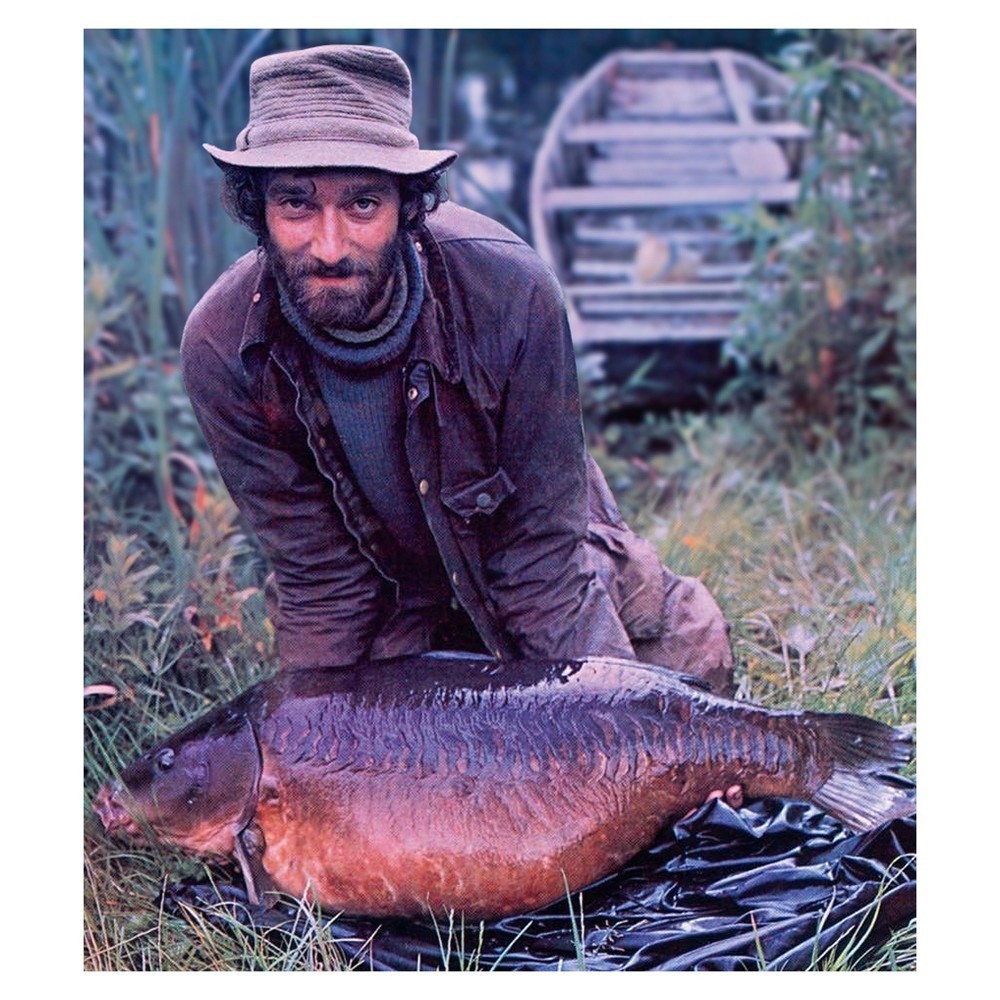 Carp fishing started to progress rapidly from this point, as we moved into the 90's the invention of the hair rig, boilies all followed, as the likes of Ritchie McDonald and Rob Maylin persued the legendary Bazil from Yately's North lake, and 'Sir' Pete Springate and co gathered on the banks of Yeovany and Wraysbury for carp such as Mary, who, Terry Hearn would go on to himself rock the carp world when he caught Mary from Wraysbury at 55lb in 1995.
Carp fishing started to progress rapidly from this point, as we moved into the 90's the invention of the hair rig, boilies all followed, as the likes of Ritchie McDonald and Rob Maylin persued the legendary Bazil from Yately's North lake, and 'Sir' Pete Springate and co gathered on the banks of Yeovany and Wraysbury for carp such as Mary, who, Terry Hearn would go on to himself rock the carp world when he caught Mary from Wraysbury at 55lb in 1995.
And it hasn't stopped, as strains were bred more selectively over the years, and baits have improved, more lakes have been stocked, we have seen more and more the truly epic proportions they can grow too, (with mirror carp tending to be faster growing than commons), with the British Record now sitting at 68.01lb, a fish now deceased that was known as the Parrot from Wasing estate, to a European record in excess of 100lb from Euro Aqua!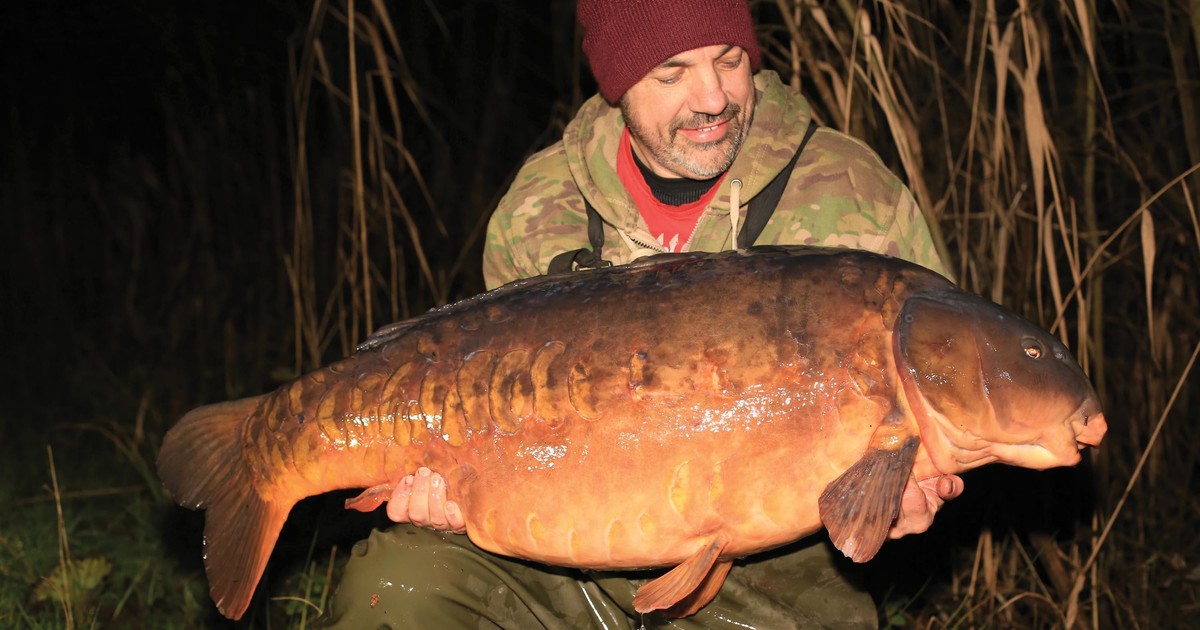
The number of big carp is only growing in the UK, and regardless of size it is hard to not be impressed when you see them on the bank, especially when you see them with incredible scaling and this is one of the many reasons that make them so popular.
Leather Carp
The rarity of a leather carp, cannot be underestimated. Taking their name from their bare leather-like flanks they bereft of scales, with only the odd scale or a true leather, no scales at all.
They were again a product of the monks breading, to reduce the number of scales, as a leather carp offered an obvious advantage to the cook as they were prepared for the table, their production wasn't easy, as they tended to demonstrate a reduced growth rate and weakened resistance to disease and as such they had a poor survival. 
A common mistake that some carp anglers make, is stating that a leather carp cannot have any scales. This is certainly not the case, and nearly all leathers will have a few scales, usually one or two on the dorsal line and a couple more at the root of the tail. A completely nude leather carp is an incredible rarity which makes them all the more impressive when one does reach epic proportions as Heather did in Yately's Car Park lake, before her passing.
As such they are not all that commonly found, and not chosen by many fish breeders, however some, such as the guys at VS fisheries do breed the odd small batch, just to keep that diversity alive.
Ghost Carp
No, not made up of the spirit of the deceased, trapped to haunt your local pit, Ghost carp, take their name from their pale demeanour, and the dark outlines they form, which when in the water give them a more spooky appearance. They can be common or mirror, as the genetic trait that gives them this appearance can affect any strain.Some anglers are not a fan, whereas I have always found them to be useful, as they can be far easier to spot, and as a result, they can act like a sight bob amongst a shoal of carp giving the others away. However, as a result, they are often a little more cagey as a result of being a moving target, constantly being cast at. This makes them a little more of an achievement if you are able to catch one off the top.
While they might not be everyone's cup of tea, they are impressive to look at, and quite striking in colour, and well worth a catch shot when one slips over the net cord!
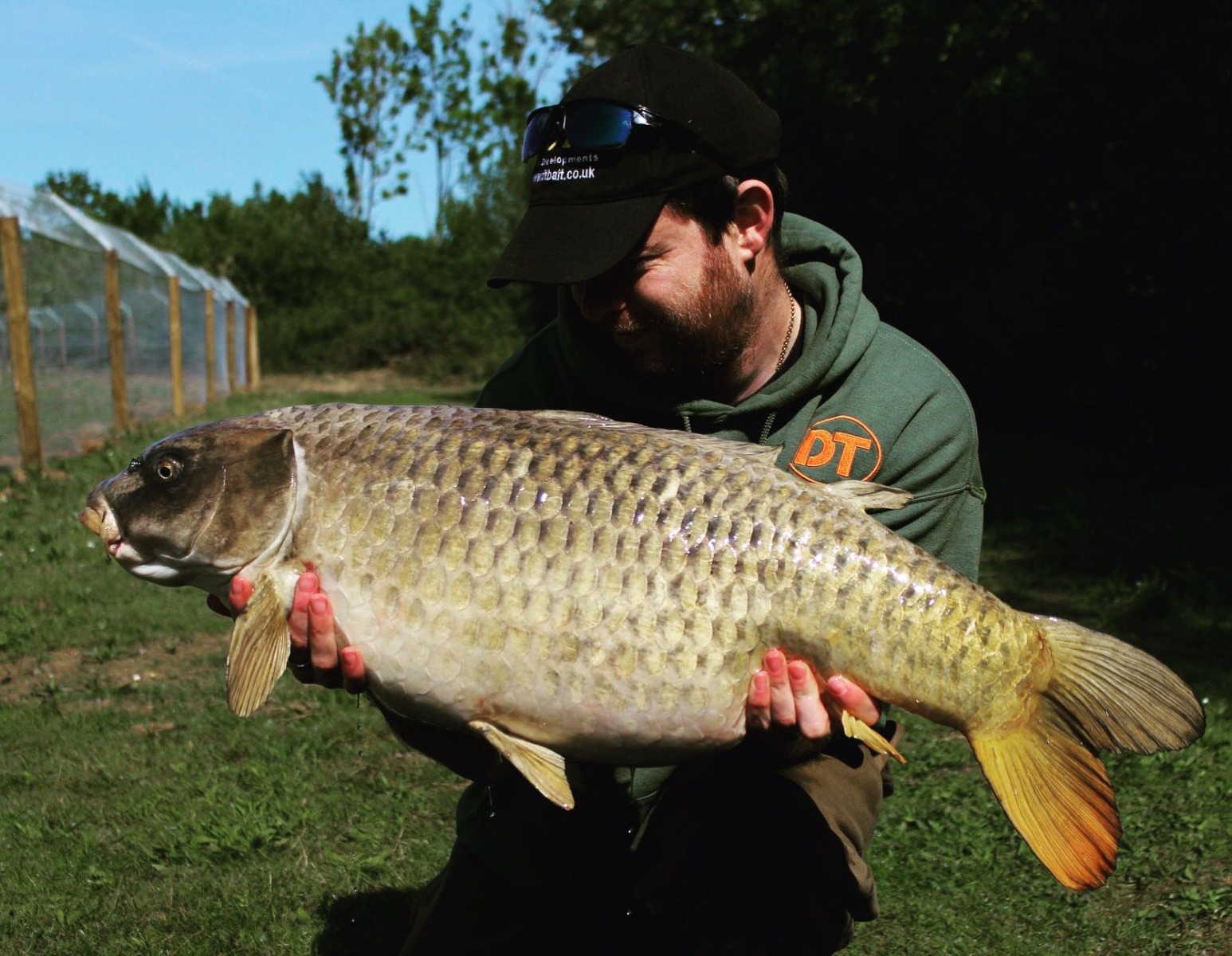
Koi Carp
Often found in ponds around the world, koi are like a sea of colours in their diversity. They will not be naturally found in lakes or rivers, most being escapees from peoples ponds in flooding, they are often frowned upon in fisheries as they can transmit diseases that other carp are susceptible too and result in devasting effects to fisheries. This doesn't mean that those in place should be removed, only that don't go moving your pond fish into you local lake to add to its diversity.
For those that have made the natural transition, they can certainly add a splash of colour, and for those odd lakes that have got a huge koi in, they really can be an amazing sight!
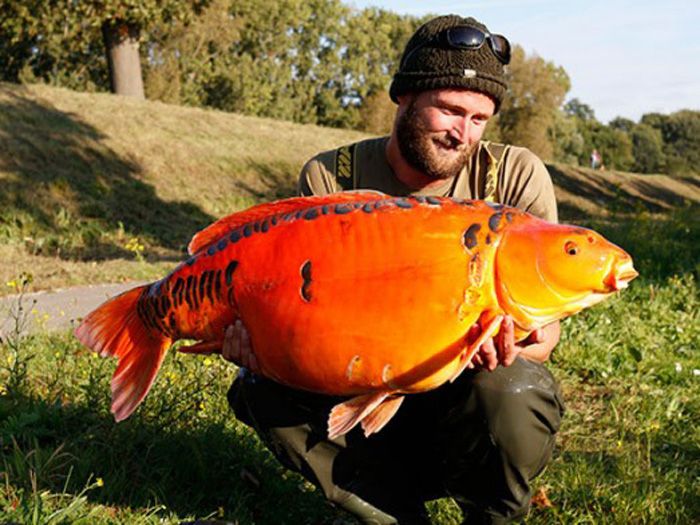
Grass Carp
Looking more like a giant chub than a carp, these were introduced into a number of lakes, with the belief that they would help control the weed growth, and would not take anglers baits. That turned out to not be the case, and they were caught over time.They are known for not particularly fighting much on the way in, but once they go into the net, they go crazy, and then proceed to fight like mad, with many an angler missing out on a catch shot as one launches clear of the net.

They are fragile creatures but impressive nonetheless, if not from their sheer length, as much as their power albeit they don't want to demonstrate it until at close quarters. Not widely spread, but an interesting capture should you land one.
Crucian Carp
The smallest carp on our list, and certainly the most fragile, and delicate of the carp species on list. Far less abundant than they used to be, they don't grow to the sizes of their cousins, a 3lb crucian is a fish of a lifetime, and they are beautiful nevertheless. With their little paintbrush tail, and buttery golden flanks, they are amazing to catch on light tackle and give a great account of themselves. I've spent many a summer morning sitting and watching telltale small pin-prick bubbles rise up next to my float waiting for that oh-so-delicate bite, before they charge into the lily pads. As a result, you need light but strong tackle and striking that balance makes them as much of a challenge to catch as finding them.A truly lovely carp despite their lack of size.

F1 Carp
No, not the motor racing sport, but they do certainly take off once hooked! These were bred in recent years to help provide exceptional sport and huge bag weights in commercial match fisheries around the UK. F1's are a hybrid between a carp and a crucian carp or brown goldfish. Whilst they don't grow huge, a few pounds in weight, looking like small silvery or bronze commons, they are stern fighters, so certainly test the elastic in many a match mans pole or the bend in his pellet waggler, whilst munching their way through volumes of pellets!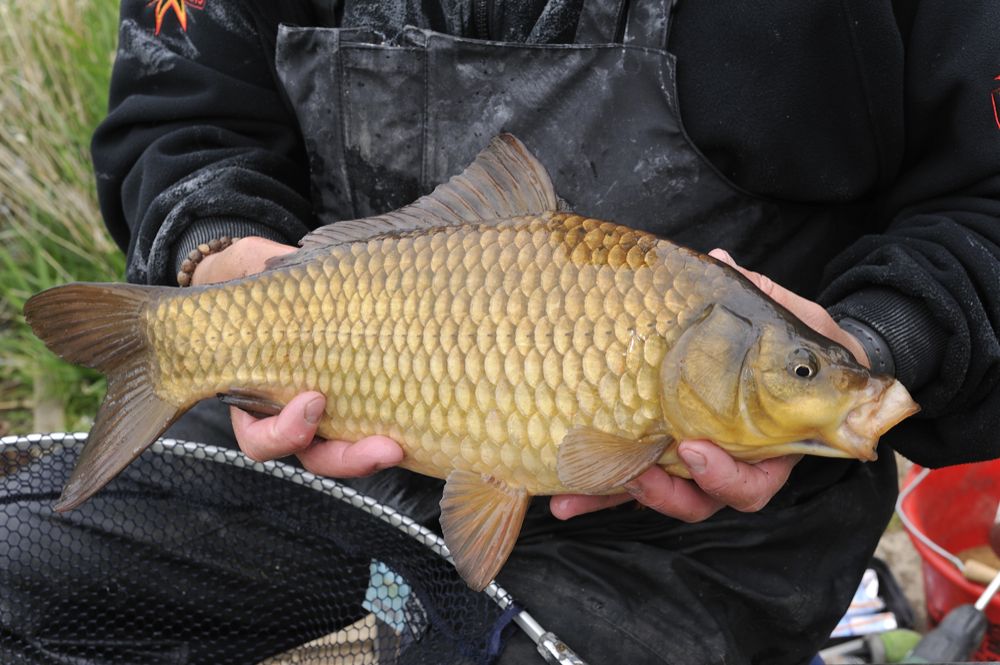
If you are new to fishing, and have a small match fishery near you, they are a great starting point and provide great action to keep you busy!
Wildies / Wild Carp
Lastly on our list, the original, the wildies. Growing not normally more than a few pounds, and looking like a small dark chestnut common, these are incredibly rare to find, the last remaining populations being found in an old moat on an old castle fort or in an ancient estate lake that time forgot.These are the original carp strain, that the Romans first brought to the UK, Their numbers have dwindled massively over the years, simply due to being bred out by the newer cultivated strains of King Carp such as common and mirror carp.
Not actively sought out by many anglers these days, due to their scarcity, those that are lucky enough to find them and do fish for them, often resort to old-school methods, of a bit of bread flake, and a centrepin reel.













